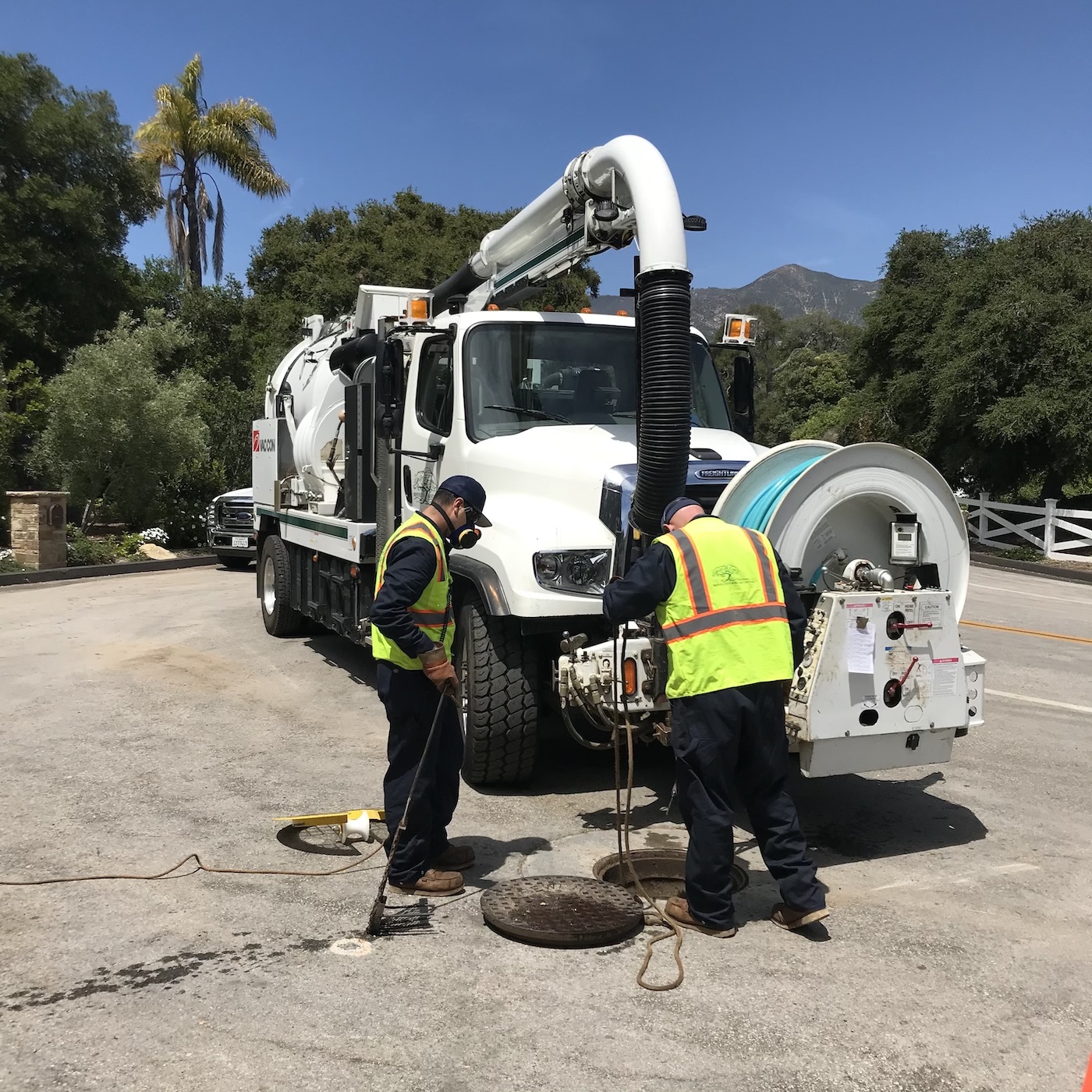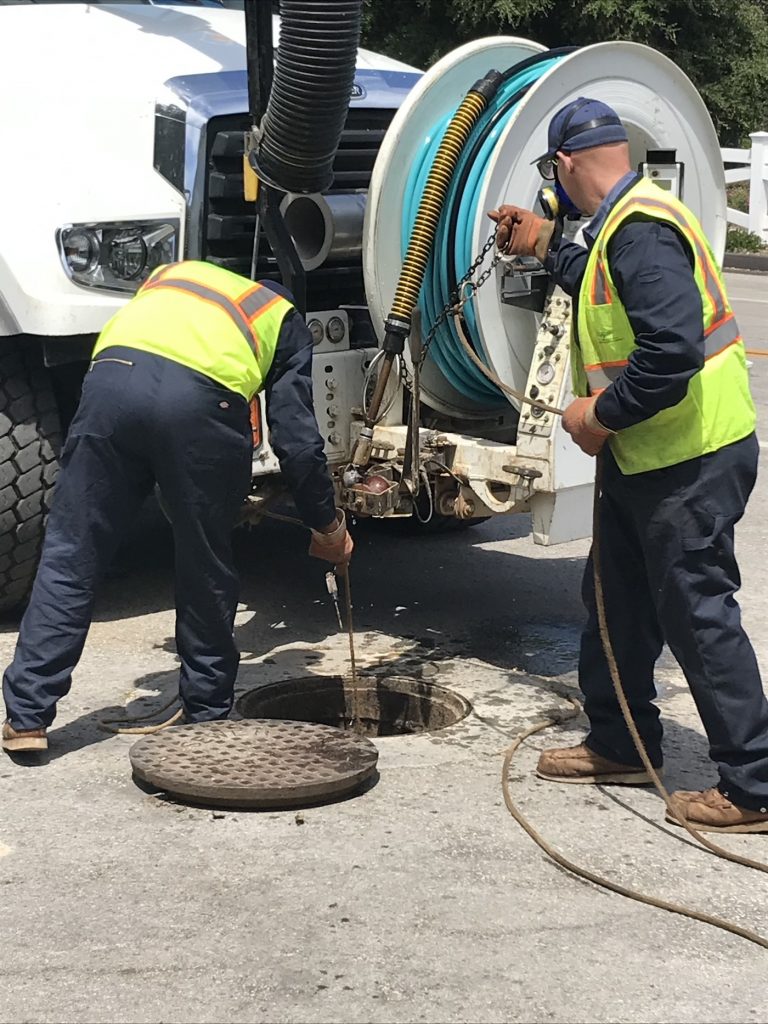When it Comes to Maintaining the Sewers, the Sanitary District’s Work Never Stops


Earlier this year, before the COVID-19 emergency, I took a tour of the Montecito Sanitary District’s waste treatment facility, where the town’s collective fecal matter is slowly bio-engineered into top-notch soil fertilizer that ends up on the shelves of our local gardening emporiums (see “Montecito’s Most Unusual Harvest,” Montecito Journal, February 12). Part of my tour of the MSD plant included a visit to the maintenance crew’s war room, where a color-coded map on the wall showed every sewer line in the district as well as when its next scheduled cleaning would take place.
“Every little dot is a manhole,” explained line inspector Ricardo Larroude as he pointed at the map. “We have over 2,000 manholes in our system and 76 miles of sewer lines to maintain. We run a really aggressive maintenance system.”


Last week, I spent the better part of an unseasonably warm day with Larroude and two other maintenance workers, Travis Kearney and Noee Ortiz, while they performed routine maintenance on sewer lines in town. They rode in a pair of vehicles including a truck equipped with a vacuum hose and a water-jet hose that, when inserted into the sewer line, spins a constant spray of water at 3,000 pounds per square inch, effectively liquifying any roots or other organic material that might be clogging the sewer. The crews then used one of two different types of rakes to remove whatever debris had been dislodged by the waterjet.
Because of COVID-19 concerns, each worker wore special masks and shields in addition to their normal protective gear. And rather than leaving the manhole open during the work, the crew used a special covering that allowed the spray hose to be easily fed in and out of the sewer, while preventing any liquid from spraying onto the street. Over the course of the day, the crew cleaned the lines, starting at a manhole at the top of a hill, then working their way gradually downhill, manhole by manhole. Each of the cleanings took approximately 10 to 15 minutes. “I’ve seen everything you can think of in the sewers, hammers, towels, rags, wet wipes,” Larroude said. “They don’t break apart.”
But on this day, other than the random remains of a wet wipe that ended up stuck to a rake, there was almost no debris, so little of it that it failed to fill a single bucket during the course of the day. This, Larroude told me, is exactly what he likes to see. “Before the January 8 debris flow, we went two years without having a spill, and since then we haven’t had one either,” he said. “Our number one goal is not to have any spills. We’ve got to stay on top of it, but our guys do a great job.”





